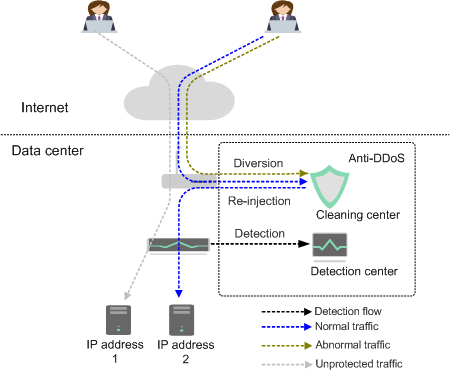Application Scenarios
Anti-DDoS devices are deployed at egresses of data centers. Figure 1 shows the network topology.
The detection center detects network access traffic according to user-configured security policies. If an attack is detected, traffic is diverted to cleaning devices for real-time defense. Abnormal traffic is cleaned, and legitimate traffic is forwarded.
Anti-DDoS provides a 300 Mbit/s mitigation capacity against DDoS attacks for free. Traffic from the attacked public IP addresses will be routed to the black hole and the legitimate traffic will be discarded.
Feedback
Was this page helpful?
Provide feedbackThank you very much for your feedback. We will continue working to improve the documentation.See the reply and handling status in My Cloud VOC.
For any further questions, feel free to contact us through the chatbot.
Chatbot






